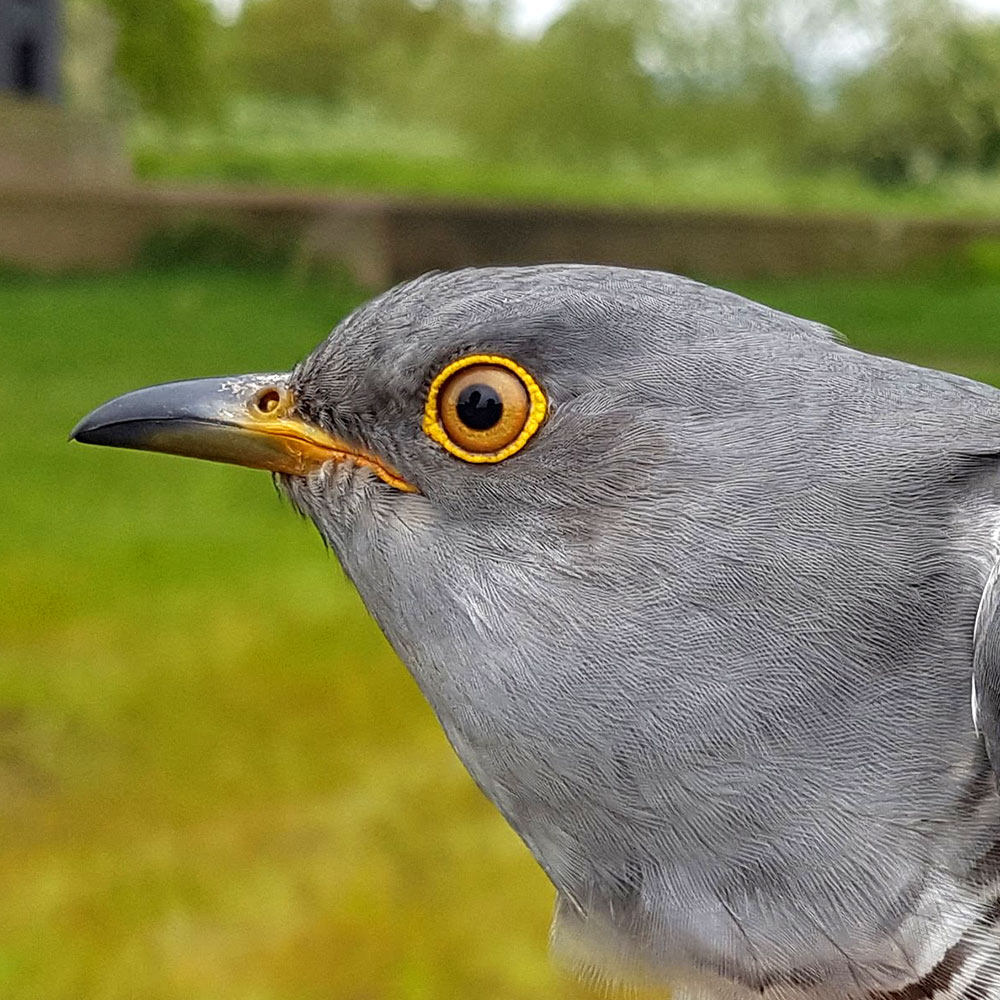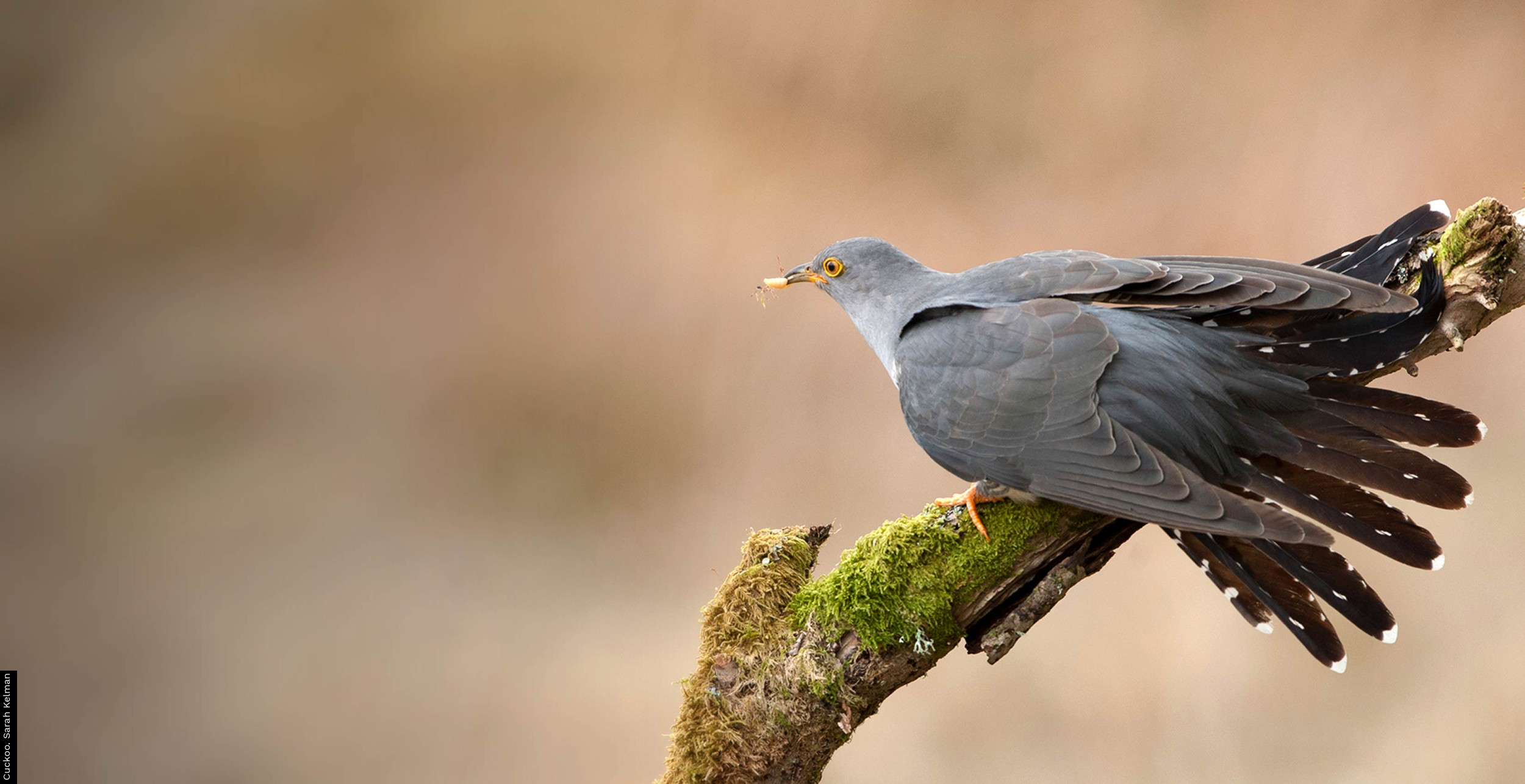Clive
Named after the late Clive Minton who inspired so many amateur and professional ornithologists. Clive and Harry (named after Harry Green MBE) were caught within half an hour of each other, which befits their real life friendship.

- Status:
- Inactive
- Tagged:
- Thursday, May 20, 2021 - 09:20
- Tagging Location:
- Ripple, Worcestershire, England
- Sex:
- Male
- Age when found:
- Adult
- Satellite Tag No.:
- 213808
- Wing Length (mm):
- 219
Clive's journey from 20 May 2021 to 17 October 2022
Clive's movements
27 Sep 2021 - Clive lost in the desert
As those of who have been following our work for a while will know, we discovered that Cuckoos breeding in the UK migrate to Africa via two main routes. Birds either migrate southwest via Spain and Morocco (the ‘western route’) or southeast via Italy or the Balkans (the ‘eastern route’) before converging in the Congo basin of central Africa. Our studies have shown that birds on the western route are significantly more likely to die before completing the Sahara crossing (even though their route was 12% shorter to this point). Very sadly, the western route has now claimed two more casualties, Harry and Clive. Clive pushed south from Morocco to Mauritania on 29 August. He then moved about 55km shortly after but the latest data shows Clive in the same place, suggesting that he has also died. These two birds have probably now made their last contributions to our growing knowledge of Cuckoos and the amazing migrations they undertake.
01 Sep 2021 - Clive is crossing the Sahara
Clive is clearly a cool character, preferring to arrive fashionably late to the party. While the other Cuckoos were well into their journeys south, he held on in northern Spain until 25 August. Once he got moving, he didn't hang about. At 08:19 on 25 August he was in central Portugal and by 11:00 he had made it as fas as southern Portugal. He didn't stop there though and by 09:58 the next morning (26 August) he had crossed to Africa, making landfall close to the port city of Safi in Morocco. He continued down the west coast of Africa that day and by 22:10 that evening he was 118 km further south. We next heard from Clive during the evening of 28 August (Saturday) by which time he was in the Akchar desert, approximately 150 km south west of the Richart Structure (the eye of Africa). A couple of recent further updates show him in the same location. This isn't a very hospitable place for a Cuckoo so hopefully we will see a new update from further south soon. He is currently 221Km north of Harry's location.
22 Aug 2021 - Clive still in Spain
An update from Clive's tag got us excited last week as it suggested he may be crossing the Sahara. However, that lower quality signal has since been followed with several high quality updates from northern Spain, showing that Clive hasn't yet made his move to Africa and remains close to Torrelavega in Spain.
03 Aug 2021 - Clive heads east
Cuckoo Clive has been on the move but is still in northern Spain. Having flown 300 Km (186 miles) north west towards Vilalba in Galicia, he has since flown 278 Km (173 miles) east and is now just outside Torrelavega.
29 Jul 2021 - Clive turns north
Over the last week or so Cuckoo Clive has been making his way steadily west from Villoslada de Cameros in La Rioja, Spain to Valladolid. New updates received this morning show that he has now turned north, flying 300Km (186 miles) north west towards Vilalba in Galicia, north west Spain. His last locations showed him near a wind farm above the villages of Sisalde and Pardela.
Sponsor a Cuckoo and support the project
“This is my first year following the Cuckoo’s journey and I would like to thank you for the happiness and pleasure it has given me reading your updates. I look forward to the next journeys. Amazing!”
Sponsor your chosen Cuckoo with a monthly Direct Debit or a one-off donation, and receive exclusive updates and insight into their migration.
Become a Cuckoo sponsor todayInformation on this page is for illustrative purposes only and should not be reproduced without permission
© British Trust for Ornithology.



Share this page